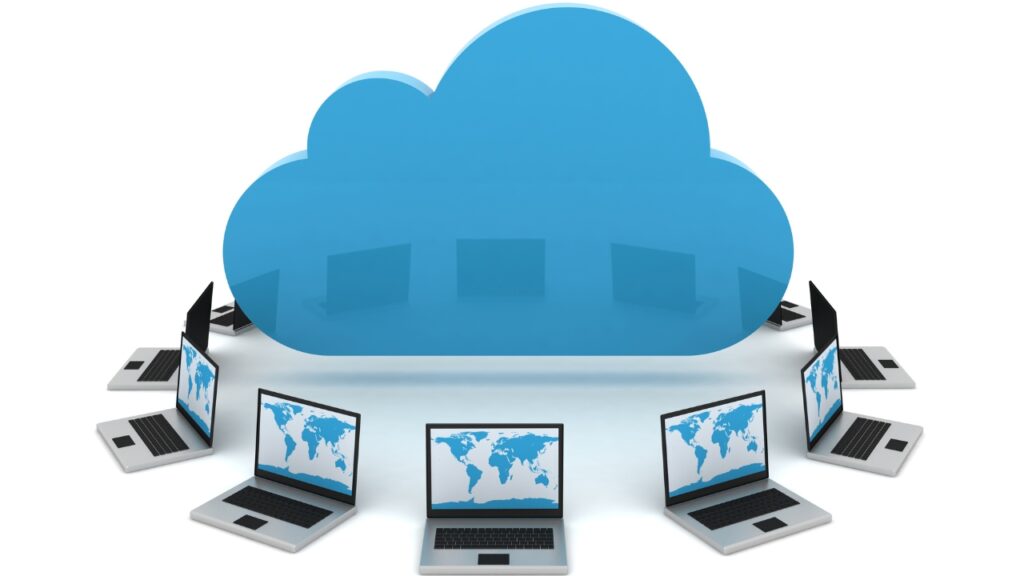In the fast-paced digital landscape of the 21st century, businesses are increasingly turning to innovative technologies to stay ahead of the curve. Cloud computing has emerged as a transformative force, revolutionizing the way organizations store, manage, and process data. In this comprehensive guide, we delve into the intricacies of cloud computing, exploring its benefits, functionalities, and how it can propel your business into the future.
Gratitude for Cloud Computing
What is Cloud Computing?
Cloud computing is a paradigm shift in the realm of information technology, providing on-demand access to a shared pool of configurable computing resources over the internet. These resources include servers, storage, databases, networking, software, analytics, and intelligence.
Key Components of Cloud Computing
- Infrastructure as a Service (IaaS): Offers virtualized computing resources over the internet, allowing businesses to scale their infrastructure without investing in physical hardware.
- Platform as a Service (PaaS): Streamlines the development process by providing a platform that includes everything needed to build, deploy, and maintain applications.
- Software as a Service (SaaS): Delivers software applications over the internet, eliminating the need for users to install, manage, and maintain the software locally.
The Advantages of Cloud Computing (C.C.)
1. Scalability and Flexibility
One of the foremost advantages of cloud computing is its unparalleled scalability. Businesses can effortlessly scale up or down based on their requirements, ensuring optimal resource utilization. This flexibility enables organizations to adapt quickly to changing market conditions.
2. Cost-Efficiency
By shifting from traditional on-premise infrastructure to the cloud, businesses can significantly reduce capital expenditures. With cloud computing, you pay only for the resources you use, eliminating the need for expensive hardware investments and maintenance.
3. Enhanced Collaboration and Accessibility
The cloud fosters collaboration by providing a centralized platform where team members can access, edit, and share documents in real-time. This accessibility, independent of geographical constraints, promotes seamless collaboration among dispersed teams.

Cloud Computing Strategies for Business Success
1. Migration Planning
Before embarking on the cloud computing journey, meticulous planning is essential. Assess your current infrastructure, identify key applications, and formulate a comprehensive migration strategy to ensure a smooth transition.
2. Security Measures
While the benefits of cloud computing are vast, security remains a top priority. Implement robust security measures, including encryption, multi-factor authentication, and regular audits, to safeguard sensitive data stored in the cloud.
3. Choosing the Right Service Model
Selecting the appropriate C.C. service model is crucial. Evaluate your business needs and opt for IaaS, PaaS, or SaaS based on your specific requirements. A tailored approach ensures maximum efficiency and cost-effectiveness.
The Future of Cloud Computing
As technology continues to evolve, so does the landscape of C.C. Emerging trends such as edge computing, serverless architecture, and hybrid cloud solutions are shaping the future of this dynamic field.
1. Edge Computing
Edge computing brings computing resources closer to the data source, reducing latency and enhancing real-time processing capabilities. This trend is gaining momentum as organizations seek to optimize performance in an increasingly data-driven world.
2. Serverless Architecture
Serverless computing allows developers to focus solely on writing code, eliminating the need to manage the underlying infrastructure. This approach enhances agility and accelerates development cycles, making it a key player in the future of C.C.
3. Hybrid Cloud Solutions
The integration of on-premise infrastructure with public and private clouds results in hybrid cloud solutions. This approach provides unparalleled flexibility, allowing businesses to leverage the advantages of both on-premise and cloud-based environments.
Challenges in Cloud Computing
However, the journey to the clouds is not without turbulence. Security concerns, data privacy issues, and occasional downtime pose challenges to widespread adoption. Addressing these challenges is crucial for businesses seeking to harness the full potential of C.C. without compromising on security and reliability.
Popular Cloud Service Providers
A myriad of providers dominate the C.C. space, with industry giants such as Amazon Web Services (AWS), Microsoft Azure and Google Cloud Platform (GCP) leading the pack. Each offers a unique set of services, catering to diverse business needs.
In conclusion, embracing the transformative power of C.C. is not just a choice but a strategic imperative for businesses aiming to thrive in the digital era. From scalability to cost-efficiency, the benefits are undeniable. As the landscape evolves, staying informed and adopting emerging trends will position your organization at the forefront of technological innovation.

Frequently Asked Questions (FAQs)
What is Cloud Computing?
C.C. is a technology that allows users to access and use computing resources (such as servers, storage, and software) over the Internet without the need for physical infrastructure.
How does Cloud computing benefit businesses?
C.C. offers cost efficiency, scalability, and flexibility, allowing businesses to optimize resources, enhance collaboration, and adapt to changing demands.
Is Cloud Computing secure?
While security concerns exist, reputable cloud service providers implement robust security measures, often surpassing what individual businesses can achieve on their own.
What are the common challenges to adopting Cloud Computing?
Challenges include security concerns, data privacy issues, and occasional downtime. Addressing these challenges requires careful planning and risk management.
Can small businesses afford Cloud Computing services?
Yes, many cloud service providers offer scalable solutions, allowing small businesses to access and pay for only the resources they need.
What are the 4 types of cloud computing?
C.C. is categorized into four main types:
- Infrastructure as a Service (IaaS): Provides virtualized computing resources over the internet, including servers, storage, and networking.
- Platform as a Service (PaaS): Offers a platform that allows users to develop, run, and manage applications without dealing with the complexities of infrastructure.
- Software as a Service (SaaS): Delivers software applications over the internet on a subscription basis, eliminating the need for local installations.
- Function as a Service (FaaS): Also known as serverless computing, it allows developers to run individual functions or pieces of code in response to events without managing the underlying infrastructure.
What are cloud computing examples?
Several examples of cloud computing services and platforms include:
- Amazon Web Services (AWS): A comprehensive cloud platform offering a wide range of services, including computing power, storage, and databases.
- Microsoft Azure: A C.C. service by Microsoft providing IaaS, PaaS and SaaS solutions, as well as various developer tools.
- Google Cloud Platform (GCP): Google’s suite of C.C. services, offering solutions for computing, storage, machine learning, and data analytics.
- Salesforce: A leading SaaS provider specializing in customer relationship management (CRM) software.
- Dropbox: A cloud storage service that allows users to store and share files over the internet.
Where is cloud computing used?
C.C. is utilized across various industries and sectors, including:
- Business and Enterprises: For data storage, application hosting, and collaboration tools.
- Education: Providing remote access to educational resources and collaboration platforms.
- Healthcare: Storing and accessing patient data, as well as facilitating telemedicine services.
- Government: Utilizing cloud services for data storage, citizen services, and collaboration among agencies.
- Startups: Leveraging cost-effective cloud solutions for the development, testing, and scaling of applications.
What is cloud computing and its benefits?
Its benefits include:
- Cost Efficiency: Eliminates the need for extensive physical infrastructure and allows for flexible, pay-as-you-go pricing.
- Scalability: Enables businesses to scale resources up or down based on demand, ensuring optimal performance.
- Flexibility: Provides the ability to access data and applications from anywhere, fostering collaboration and remote work.
What are the advantages and disadvantages of cloud computing?
Advantages:
- Cost savings: Reduced upfront infrastructure costs and a pay-as-you-go pricing model.
- Scalability: Easily scale resources to meet changing demands.
- Flexibility: Access data and applications from any device with an internet connection.
Disadvantages:
- Security Concerns: Potential risks related to data security and privacy.
- Downtime: Dependency on internet connectivity; service outages may impact operations.
- Limited Customization: Some applications may have limitations in terms of customization.
What are the three major advantages of cloud computing?
- Cost Efficiency: C.C. minimizes upfront infrastructure costs and allows businesses to pay for the resources they consume, avoiding unnecessary expenses.
- Scalability: Businesses can easily scale their computing resources up or down based on demand, ensuring optimal performance without overprovisioning.
- Flexibility: C.C. provides the flexibility for users to access data and applications from anywhere with an internet connection, promoting collaboration and facilitating remote work.






